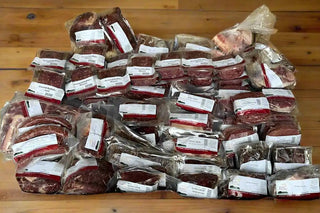The carbon cycle is a fundamental process that regulates the amount of carbon in the atmosphere and on Earth. It involves the movement of carbon between the atmosphere, oceans, soil, and living organisms. Understanding how the carbon cycle works is crucial for addressing climate change and its impacts.
How does the carbon cycle work?
The carbon cycle begins with carbon dioxide (CO2) in the atmosphere, which is absorbed by plants during photosynthesis. Plants use this carbon to grow and produce oxygen as a byproduct. Animals then consume these plants, transferring the carbon through the food chain. When plants and animals die, their remains decompose, releasing carbon back into the atmosphere as CO2.
How do cows impact the carbon cycle?
Cows have positive impacts on the carbon cycle, particularly through practices like regenerative agriculture and holistic grazing management. Here’s how cows contribute positively:
1. Soil Carbon Sequestration: Well-managed grazing practices can improve soil health and increase its carbon storage capacity. Grazing can stimulate plant growth, leading to more carbon intake through photosynthesis and more carbon stored in the roots and soil. Techniques such as rotational grazing help maintain soil cover, reduce erosion, and build soil organic matter.
2. Biodiversity Enhancement: Properly managed pastures can support a variety of flora and fauna, contributing to biodiversity. This diversity can enhance ecosystem resilience and function, which may indirectly help in carbon sequestration and maintaining ecological balance.
3. Reduction of Wildfire Risks: Grazing can reduce the buildup of flammable vegetation in certain ecosystems, potentially decreasing the frequency and intensity of wildfires, which can release significant amounts of CO2 when they occur.
4. Substitute for Synthetic Inputs: Integrating livestock into crop systems can reduce the need for synthetic fertilizers and pesticides. Manure can serve as a natural fertilizer, improving soil fertility and structure, and reducing reliance on chemical inputs which have high carbon footprints.
5. Sustainable Local Food Systems: Locally raised cattle can contribute to more sustainable food systems by reducing the need for long-distance food transportation, which involves significant fossil fuel consumption and CO2 emissions.
While cows naturally produce methane, a potent greenhouse gas, the net effect on the carbon cycle can be mitigated or even reversed under certain conditions if sustainable grazing and farming practices are employed. This demonstrates that the management practices are crucial in determining the overall environmental impact of cattle.




